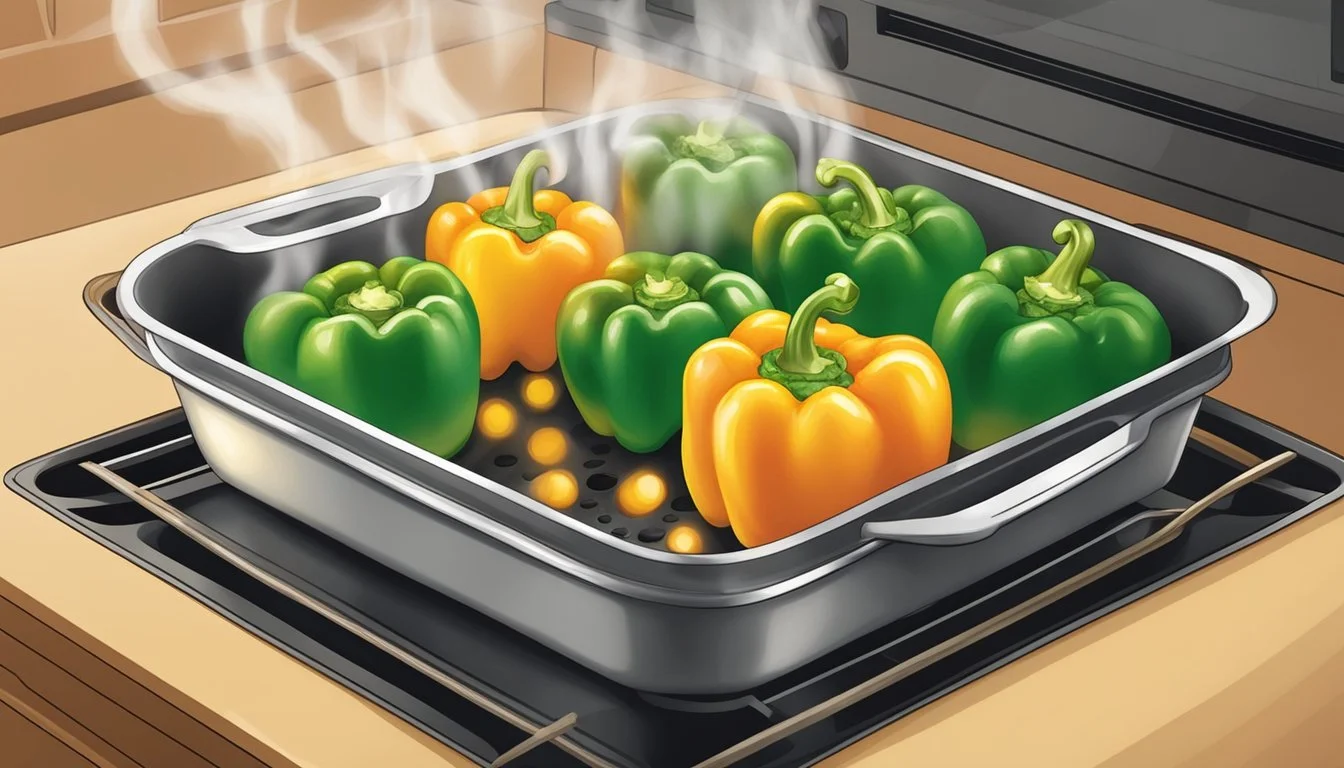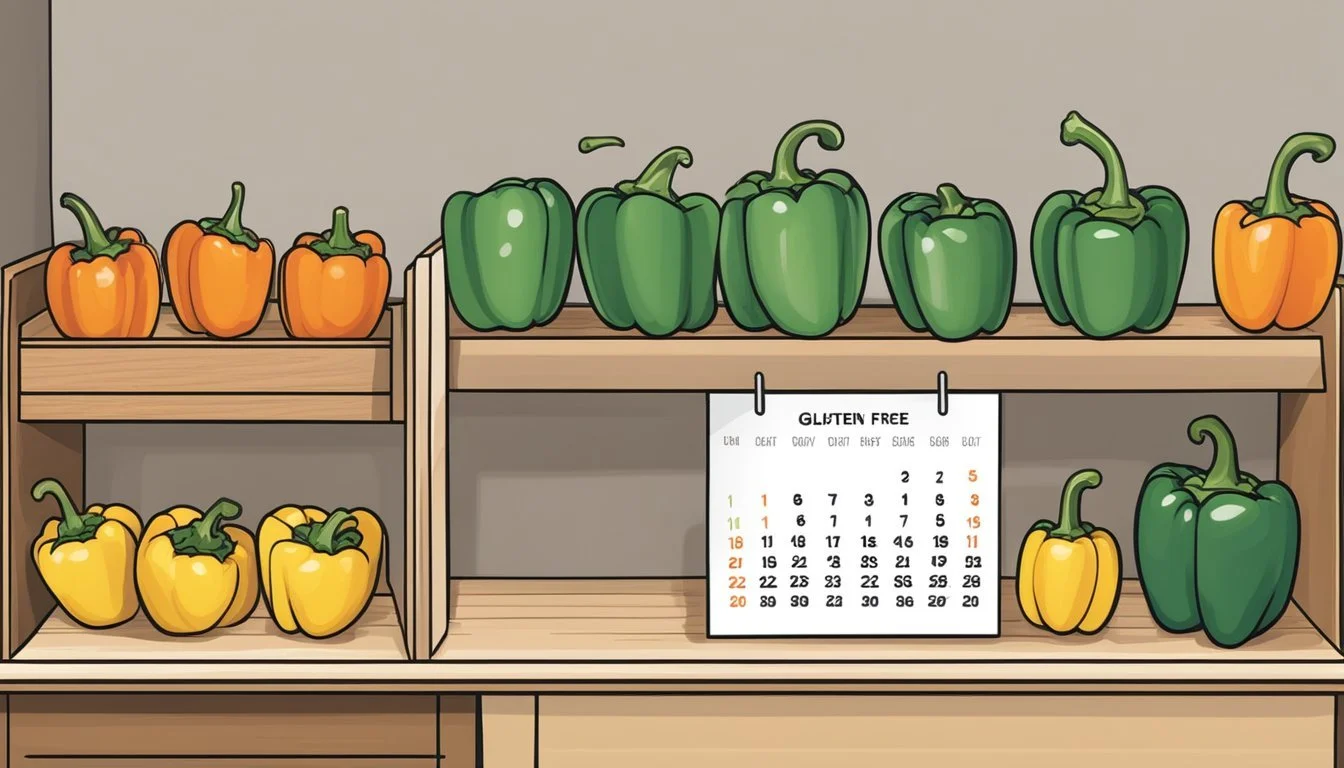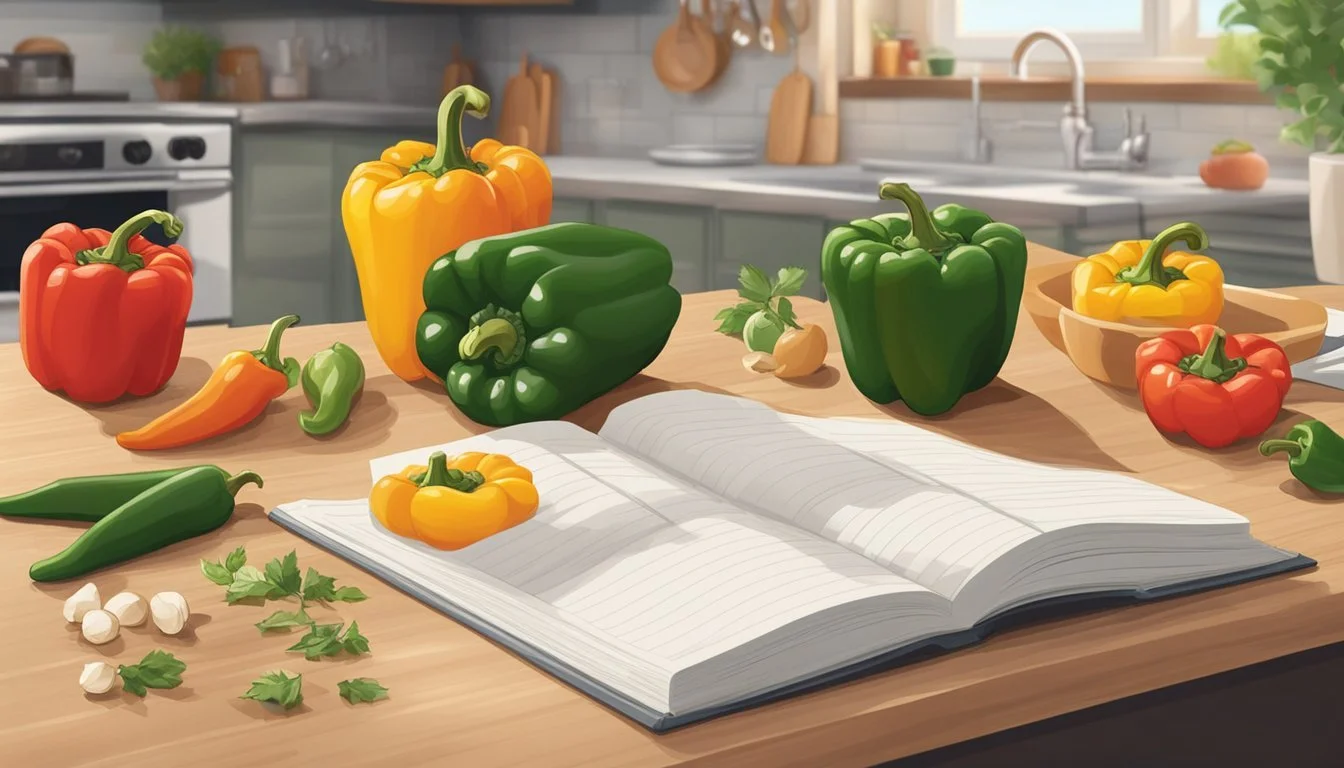How Long Do Gluten-Free Stuffed Peppers Last?
Storage Tips and Shelf Life Explained
Gluten-free stuffed peppers are a delicious and convenient meal option for those adhering to a gluten-free diet. When stored properly, these flavorful stuffed peppers can last up to 3-4 days in the refrigerator. For extended storage, they can be frozen for up to 2 months, making them an ideal make-ahead dish.
The versatility of gluten-free stuffed peppers allows for a variety of ingredients. They typically feature a mixture of ground beef, onions, rice, and plenty of spices. Once baked in the oven, these peppers can be enjoyed fresh or saved for later. Proper storage in airtight containers ensures they maintain their quality and taste.
Whether they're part of a weekly meal prep or a quick dinner solution, gluten-free stuffed peppers deliver on flavor and convenience. This dish not only caters to dietary restrictions but also provides a satisfying meal option that can be prepared in advance.
Ingredients and Substitutions
Primary Ingredients
Bell Peppers: These can be any color, though red, yellow, and orange are sweeter than green.
Ground Meat: Common choices are ground beef or turkey. Both provide protein and a savory flavor.
Rice: Used as a filler, cooked white or brown rice works well.
Onion and Garlic: Sautéed onions and minced garlic add aromatic flavor.
Vegetables
Tomatoes: Diced tomatoes provide moisture and acidity.
Carrots and Zucchini: Diced and sautéed, these add texture and nutrition.
Mushrooms: Optional, but they contribute umami and bulk.
Dairy Components
Cheese: Commonly cheddar or mozzarella. Cheese provides creaminess and a golden top.
Dairy-Free Options: Nutritional yeast or dairy-free cheese alternatives can be used.
Seasonings
Salt and Pepper: Essential for seasoning.
Herbs: Fresh or dried basil, Italian seasoning, and parsley add depth.
Olive Oil: Used for sautéing vegetables and greasing pans.
Substitutions
Ground Meat: Ground chicken or pork can be alternatives.
Rice: Quinoa or cauliflower rice can replace traditional rice for additional nutritional benefits.
Tomatoes: Tomato sauce or paste can be used if diced tomatoes are unavailable.
Cheese: Vegan cheese for dairy-free requirements.
By mixing different combinations of these ingredients and considering substitutions, one can adapt the recipe to various dietary needs and preferences without compromising taste.
Preparing the Peppers
To begin, preheat the oven to 380°F. This ensures it reaches the right temperature for baking.
Select bell peppers of uniform size. Cut off the tops and remove the seeds and membranes. Ensure the stem is discarded.
Boil the peppers for 3 minutes in a large pot of water. This will soften them slightly, making them easier to stuff.
Remove the peppers from the water using tongs. Set them on paper towels to drain and cool.
In a large skillet, heat olive oil over medium heat. Add chopped onions and cook until they are soft and translucent.
Prepare the stuffing by combining ground beef, spices, herbs, and partially cooked rice. Add sea salt to taste.
Incorporate half of the grated cheddar cheese into the stuffing mixture. Mix everything thoroughly.
Arrange the cooled peppers in a baking dish coated with cooking spray. Spoon the stuffing into each pepper, packing it down with a spoon.
Top the peppers with the remaining cheddar cheese and gluten-free breadcrumbs. This adds both flavor and a crispy texture.
Bake the stuffed peppers in the preheated oven for 35 minutes. Once done, let them cool slightly before serving.
This method ensures the peppers are evenly cooked and flavorful. Enjoy the gluten-free stuffed peppers hot from the oven.
Stuffing Mixture
The stuffing mixture for gluten-free stuffed peppers can vary, but there are several key ingredients commonly used.
Proteins: Ground beef, ground turkey, ground chicken, or lean ground beef are popular choices. They provide a hearty base for the stuffing. Ground pork is another option, offering a different flavor profile.
Grains: Rice is often included as a filler. Brown rice or cooked white rice are both suitable.
Vegetables: Common additions include chopped onions and garlic, which enhance the flavor. Diced tomatoes add moisture and a fresh taste.
Cheese: Shredded cheddar cheese is popular for its melty texture and sharp flavor, but other cheeses can be used as well.
Herbs and Spices: Chopped parsley, oregano, and paprika are frequently used to season the mixture. Salt and pepper are also essential for taste.
Liquids: Tomato sauce or broth can be mixed in to bind the mixture and add richness.
Preparation:
In a mixing bowl, combine the chosen protein with onions, garlic, and tomatoes.
Add in the rice, herbs, and spices.
Mix thoroughly until all ingredients are well-incorporated.
Lastly, fold in the shredded cheddar cheese for extra flavor and creaminess.
Make sure the mixture is well-seasoned and moist enough to hold together when stuffed into the peppers. This balance ensures a delicious and cohesive stuffing for the gluten-free peppers.
Cooking Process
Preheat the oven to the desired temperature, usually around 350°F or 380°F, depending on the recipe. This ensures even cooking.
Wash and de-seed the peppers. Blanch them in boiling water for about 3 minutes to soften. Drain and cool them on paper towels.
In a bowl, combine ground beef with chopped onions, spices, and other ingredients such as parsley and cheese. This mixture forms the stuffing for the peppers.
Sauté carrots and onions in a skillet until tender. Add minced meat and cook until browned. This helps enhance the flavors and ensure the meat is well-cooked.
Arrange the cooled peppers in a baking dish coated with cooking spray. Stuff the peppers with the prepared meat mixture, filling them to the top.
Cover the dish with foil to retain moisture during the baking process. Bake for around 35 minutes. This melts the cheese and heats the filling thoroughly.
Optional: Remove the foil and broil for an additional 10-15 minutes to get a crispy, golden-brown top. This adds a nice texture contrast.
After baking, let the gluten-free stuffed peppers rest for a few minutes. This helps the stuffing set and makes them easier to serve.
To reheat leftovers, use a microwave or oven. Cover with foil to prevent them from drying out.
This method ensures the gluten-free stuffed peppers remain flavorful and moist.
Proper Storage
To maximize the shelf life of gluten-free stuffed peppers, proper storage is essential.
Once cooked, allow the peppers to cool to room temperature.
Transfer the peppers to an airtight container. This prevents moisture and contaminants from getting in.
If you prefer, you can also wrap each pepper individually in foil before placing them in the container.
Storing in the Refrigerator
Gluten-free stuffed peppers can last for 3-5 days in the refrigerator. Always store them on a middle shelf to maintain a consistent temperature.
Freezing Leftovers
For longer storage, consider freezing the stuffed peppers.
Place the wrapped peppers in a single layer on a baking sheet and freeze until solid. This step prevents them from sticking together once transferred to a larger storage bag.
Once frozen, transfer them to a freezer-safe airtight container or heavy-duty freezer bag. Label the bag with the date for easy reference.
Reheating
When ready to eat, remove the peppers from the freezer and thaw them in the refrigerator overnight.
Reheat in the oven at 375°F for 20-25 minutes or until heated through. For best results, cover the peppers with foil to prevent drying out.
These steps ensure that gluten-free stuffed peppers stay fresh and safe to eat. Proper storage also helps maintain their delicious flavor and texture.
Shelf Life Considerations
When storing gluten-free stuffed peppers, the shelf life largely depends on the storage method.
In the Refrigerator: Gluten-free stuffed peppers can last 3-5 days in the refrigerator. It is crucial to store them in an airtight container to minimize exposure to air and moisture.
In the Freezer: For longer storage, freezing is an option. Place the peppers in a freezer-safe container or a heavy-duty freezer bag. When frozen, gluten-free stuffed peppers can last up to 2 months.
Airtight Containers: Using airtight containers helps keep the stuffed peppers fresh by preventing bacteria and mold growth. This also helps maintain the flavor and texture.
Reheating: When ready to eat, reheat the peppers thoroughly. Ensure they reach an internal temperature of 165°F (74°C) to be safe for consumption. Reheating can be done in the oven or microwave.
Food Safety: Always follow appropriate food safety practices to avoid any risk of foodborne illnesses. Keep the refrigerator at or below 40°F (4°C) and the freezer at 0°F (-18°C).
Even with proper storage, always check for signs of spoilage before consuming. Look for any unusual odor, discoloration, or mold. Eating spoiled food can lead to food poisoning, so it's better to err on the side of caution.
Serving Suggestions
Stuffed bell peppers make a versatile meal that can be served in various ways to enhance flavor and nutritional value.
Salad: Pair stuffed peppers with a fresh green salad. Mixed greens with a light vinaigrette complements the heartiness of the peppers.
Gluten-free bread: Serve with slices of gluten-free bread. This adds a nice texture contrast and helps soak up any extra filling.
Nutrition Information: One stuffed bell pepper typically contains moderate calories, high fiber, and low sugar. Be mindful of sodium and fat content, especially with added cheese and breadcrumbs.
Toppings: Add extra toppings like shredded cheese, fresh herbs, or a dollop of sour cream. These not only add flavor but boost the visual appeal.
It's essential to consider dietary preferences and nutrition, especially gluten-free requirements, when choosing sides and toppings. By combining different elements, you can create a well-rounded and satisfying dish.
Nutritional Information
Gluten-free stuffed peppers offer a nutritionally balanced meal, rich in vitamins and minerals. Here is a breakdown of key nutritional components typically found in this dish:
Calories: Approximately 250-350 calories per serving, depending on the specific ingredients used.
Protein: Usually 15-20 grams per serving, primarily from ground meat or vegetarian protein sources.
Peppers are an excellent source of fiber, contributing around 5-7 grams per serving. This helps in maintaining digestive health.
Total Fat: The fat content can vary. Typically, it ranges between 10-15 grams, with saturated fat making up about 3-5 grams.
Unsaturated Fat: Healthy fats found in olive oil or other cooking oils may contribute to about 7-10 grams.
Cholesterol levels are moderate, generally around 30-50 milligrams per serving, primarily from animal-based ingredients like ground beef or turkey.
Carbohydrates: Stuffed peppers contain around 30-40 grams of carbohydrates, including natural sugars from the peppers themselves.
Sugar: Natural sugars contribute about 5-10 grams. No additional sugars are usually added.
Sodium: With salt and various seasonings, sodium content can reach 500-700 milligrams. Using low-sodium options can reduce this amount.
Bell peppers provide essential nutrients:
Iron: Each serving supplies around 1.5-2.5 milligrams, crucial for blood health.
Vitamin C: High amounts, as bell peppers are rich in this vitamin, which boosts the immune system.
Incorporating gluten-free breadcrumbs or rice can add more fiber and adjust the carbohydrate content.
Common Questions
How long do gluten-free stuffed peppers last in the refrigerator?
Gluten-free stuffed peppers typically last 3 to 4 days when stored in the refrigerator. Use an airtight container to maintain freshness.
Can you freeze gluten-free stuffed peppers?
Yes, gluten-free stuffed peppers can be frozen. Ensure they are completely cool before placing them in a freezer-safe, air-tight container or wrapping them tightly in foil. They can last up to 2 months in the freezer.
What is the best way to reheat stuffed peppers?
Microwave: Reheat on medium power for 2-3 minutes.
Oven: Preheat to 350°F, cover the peppers with foil, and heat for 15-20 minutes.
How should leftover stuffed peppers be stored?
Store leftovers in the refrigerator in airtight containers to prevent loss of moisture and flavor.
Is it necessary to use fresh beef broth for gluten-free stuffed peppers?
Fresh beef broth is ideal, but you can use pre-made, gluten-free broth too. Make sure it is labeled gluten-free to avoid contamination.
Are all types of peppers suitable for stuffing and freezing?
Yes, most types of peppers can be stuffed and frozen, provided they are prepped properly.
Can gluten-free stuffed peppers be baked in both gas and electric ovens?
Yes, they can be baked in both types of ovens. Gas ovens typically preheat a bit faster, while electric ovens may offer more consistent temperature control. Preheat to the recommended temperature, usually around 350°F to 380°F.
Food safety when handling gluten-free stuffed peppers?
Always cook ground beef to an internal temperature of 160°F. Store cooked peppers in an airtight container and refrigerate promptly to reduce the risk of bacteria growth.











